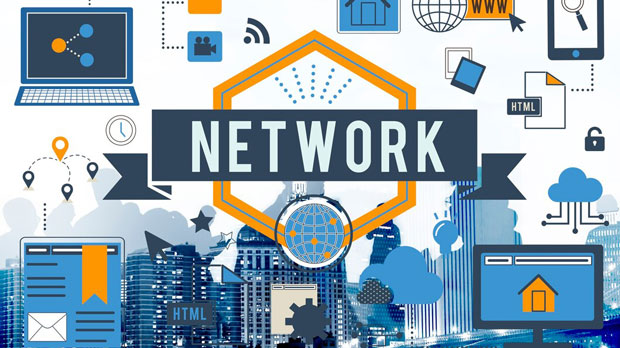In today's rapidly advancing digital age, automating routine tasks has become a priority for businesses aiming to improve efficiency and reduce human error. One such area ripe for automation is pharmaceutical purchasing. With the combination of Python programming, PYPROXY, and the Nimble Pharmacy API, businesses can set up a fully automated solution for purchasing medications. This end-to-end automation script ensures timely procurement, reduces human intervention, and simplifies the entire process for a seamless operation. In this article, we will delve into the specifics of setting up an automated drug purchasing system using Python, PYPROXY, and Nimble Pharmacy API, highlighting its key benefits, technical considerations, and practical applications. What is an End-to-End Automated Drug Purchasing System?An end-to-end automated drug purchasing system is a streamlined process that handles everything from order creation to delivery, without requiring human involvement at each step. Using the right tools, businesses can leverage this system to automatically place orders, track inventory levels, and make informed purchasing decisions based on real-time data. In this context, Python serves as the backbone of the automation script, providing the necessary tools for system integration, while PYPROXY adds a layer of security and anonymity, allowing users to interact with the Nimble Pharmacy API without exposing sensitive data or IP addresses.Understanding Python's Role in AutomationPython is a powerful, flexible programming language that has become a go-to choice for automation tasks. Its simplicity and wide range of libraries make it ideal for integrating with various APIs and systems. In the context of an automated drug purchasing system, Python can be used to:1. Automate API Requests: Python allows for smooth communication between the user’s system and the Nimble Pharmacy API. Using libraries such as `requests` or `http.client`, Python can send requests to the API to fetch drug details, place orders, or check inventory.2. Data Parsing and Handling: The data retrieved from the API is typically in JSON or XML format. Python’s built-in libraries like `json` and `xml.etree.ElementTree` enable easy parsing of this data to extract and use necessary information, such as drug availability, prices, and other relevant details.3. Error Handling: Python provides robust error-handling mechanisms to ensure that the script runs smoothly even if the API encounters an issue, or if there is a connection problem. This is crucial for maintaining uninterrupted service and ensuring reliability in the automated process.The Role of PYPROXY for Security and AnonymityWhen dealing with sensitive data, security is of utmost importance. PYPROXY is a Python library that facilitates proxy usage, offering a simple way to route API requests through proxy servers. This ensures that:1. Anonymity is Maintained: By masking the user's IP address, PYPROXY ensures that the interaction between the system and the Nimble Pharmacy API remains private.2. Access Control: Some APIs might have geographical restrictions or access controls based on IP addresses. Using PYPROXY, users can route requests through a server in a permitted region to bypass such restrictions.3. Security: Using a proxy can add an additional layer of security, protecting the client’s network from potential threats while interacting with external services.Integrating with Nimble Pharmacy APIThe Nimble Pharmacy API provides a comprehensive set of functionalities that make it easy to automate the drug purchasing process. Key features of the API include:1. Drug Information: The API provides real-time data on available medications, including pricing, stock levels, and detailed product information, allowing the automation script to make informed decisions when placing orders.2. Order Placement: Once the required medication is identified, the API facilitates automated order placement. By using Python to send the correct API requests, the script can automatically order the medication when inventory reaches a predefined threshold or when a specific drug is needed.3. Inventory Management: The API allows users to track stock levels and reorder medications as required, which is especially useful for businesses or pharmacies that need to maintain constant drug availability.4. Transaction Records: The Nimble Pharmacy API can also return records of past transactions, providing a complete history for auditing, accounting, or tracking purposes. This data can be automatically logged into the system for future reference.Benefits of Automating Drug Purchasing with Python, PYPROXY, and Nimble Pharmacy APIThe integration of Python, PYPROXY, and the Nimble Pharmacy API offers several key advantages for businesses looking to automate their drug purchasing processes:1. Efficiency and Speed: Automation eliminates the need for manual intervention, speeding up the purchasing process and ensuring that medication is ordered promptly before stock runs out.2. Error Reduction: By reducing human involvement, the chances of mistakes in ordering, such as wrong quantities or incorrect medications, are minimized.3. Cost Savings: Automation reduces labor costs and ensures that the right medication is ordered at the right time, preventing overstocking or stockouts, which can lead to financial losses.4. Real-Time Updates: With the integration of the Nimble Pharmacy API, businesses have access to real-time data on drug availability and pricing, enabling them to make more informed purchasing decisions.5. Improved Scalability: As the automation process is script-based, it can be easily scaled to accommodate growing demand, whether that means placing more frequent orders or managing a larger inventory.Technical Considerations and ChallengesWhile the integration of Python, PYPROXY, and Nimble Pharmacy API offers many benefits, there are certain challenges and considerations to keep in mind:1. API Limitations: The Nimble Pharmacy API may have usage limits or restrictions on the number of requests that can be made in a given period. Careful monitoring of API usage is essential to avoid throttling or service interruptions.2. Security Measures: While PYPROXY enhances security by masking the IP address, businesses should still ensure that sensitive data is transmitted securely through encryption protocols like HTTPS to prevent data breaches.3. Error Handling: Although Python provides excellent error handling, robust logging systems need to be set up to capture any issues during script execution. This will ensure that the automation process can be monitored and debugged if necessary.The integration of Python, PYPROXY, and the Nimble Pharmacy API into an automated drug purchasing system presents an efficient, scalable, and secure solution for businesses in need of streamlining their pharmaceutical procurement processes. By automating the ordering process, businesses can improve efficiency, reduce human error, and ensure timely drug delivery. While there are challenges to address, such as API limitations and security concerns, the benefits far outweigh these hurdles, making this an invaluable tool for those looking to optimize their operations.
Jun 04, 2025






















































